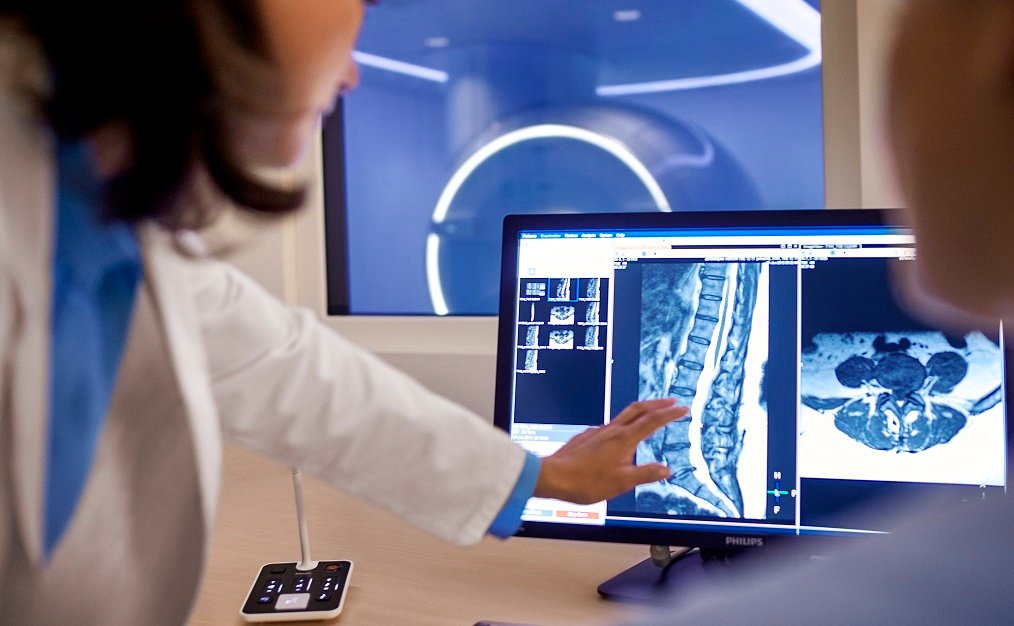
Photo Credit: Philips
Eight in 10 radiologists in Singapore, Australia and South Korea (80%) believe that artificial intelligence (AI) will be introduced into their current clinical workflow, enabling more confident diagnosis and data processing, according to a new radiology industry study released today by Royal Philips, a global leader in health technology.
The report, “Precision Diagnosis: Radiology’s Evolution Towards a Digital Healthcare Future”, which surveyed over 100 radiologists in Singapore, Australia and South Korea about their views and challenges in adopting greater digitization, also found that nearly three in five radiologists (60%) have turned to teleradiology during the pandemic, most often used in distant consultations with remote workflow to enhance diagnosis and treatment plans as patients remain indoors.
As a core pillar of healthcare, radiology serves as a critical starting point that informs a patient’s state of health, treatment plan, and journey towards recovery. With rising healthcare challenges of aging populations, chronic disease prevalence, and growing demand for healthcare services, the study reveals that many of the region’s radiologists find themselves at a critical crossroad.
Enhancing workflows, increasing efficiencies
Even as the healthcare industry continues to rapidly digitalize, Philips’ research reveals that a number of factors are hindering technology adoption within radiology.
For radiologists in the countries surveyed, the top five roadblocks in streamlining workflows through technology adoption are the lack of well-organized, reliable and cybersafe IT environments (56%), cost of digital transformation (47%), staff training and knowledge (34%), data interoperability (32%) and implementation and adoption time (31%).
Table 1: Top roadblocks to streamlining workflows
|
Top roadblocks/gaps |
Regional average |
Singapore |
Australia |
South Korea |
|
A well-organized, reliable and cybersafe IT environment |
56% |
60% |
51% |
55% |
|
Cost of digital transformation |
47% |
43% |
57% |
42% |
|
Staff training and knowledge |
34% |
43% |
29% |
32% |
|
Data Interoperability |
32% |
23% |
37% |
34% |
|
Implementation and adoption time |
31% |
29% |
26% |
37% |
|
Others (please specify) |
2% |
3% |
- |
- |
While technological advances have led to imaging solutions that enhance diagnosis, this has also introduced the need to work across multiple workflows from different modalities. Radiologists surveyed say they are challenged on this front by inefficient setup of workflows (66%), lack of clinical imaging expertise (63%), and lack of interoperability (57%).
Yet, positively, the radiologists that were surveyed say they are adopting the use of multi-modality platforms to manage images across modalities like X-Ray and MRI scans and streamline workflows, led by those in Singapore (97%) and followed closely by their peers in Australia (89%) and South Korea (84%).
Opportunities abound to transform precision diagnosis
Philips’ report also finds that AI is transforming healthcare outcomes in Asia Pacific by enabling radiologists to make more confident diagnosis and treatment decisions. Among the three surveyed countries, Singapore’s radiologists are the biggest champions of AI with two-thirds (66%) believing that AI will be introduced into their current clinical workflow, compared to 60% in Australia and 53% in South Korea.
When asked how they envision the future of precision diagnosis, the radiologists highlighted the use of data and AI to improve patient care, particularly with the use of informatics and cloud technologies to accelerate workflows.
Workplace challenges hindering productivity
As with other healthcare professions at the frontline of patient care, radiology continues to be a highly intensive, volume-heavy role that has only been exacerbated by workplace and technical challenges, and shortage of skilled talent.
Radiologists across the three countries surveyed continue to face pressures at their workplace, with top concerns being increased patient volumes/high demand (33%), variability in staff expertise (15%), increased staff workload/staff stress (14%), lack of AI integration in clinical workflows (11%) and lack of first-time right imaging for diagnosis (9%).
Table 2: Top workplace concerns and challenges
|
Top concerns faced |
Regional average |
Singapore |
Australia |
South Korea |
|
Increased patient volumes/high demand |
33% |
34% |
43% |
24% |
|
Variability in staff expertise |
15% |
6% |
11% |
26% |
|
Increased staff workload/staff stress |
14% |
17% |
6% |
18% |
|
Lack of AI integration in clinical workflows |
11% |
6% |
14% |
13% |
|
Lack of first-time right imaging for diagnosis |
9% |
9% |
9% |
11% |
|
Repeat examinations |
7% |
12% |
9% |
3% |
|
Patient no-shows |
6% |
9% |
6% |
3% |
|
Staff dissatisfaction / turnover |
5% |
9% |
3% |
3% |
“As the healthcare landscape continues to redefine itself, it’s especially crucial to ensure radiology continues to be a key pillar of this transformation,” said Peter Quinlan, Business Leader, Precision Diagnosis and Image-Guide Therapy, Philips ASEAN Pacific. “Healthcare leaders need to engage in deeper dialogue with radiologists to understand their pain points and ensure that new technologies are meaningfully implemented and used to their fullest potential. As the first touchpoint of the patient journey, transforming precision diagnosis towards a smarter, more connected practice will enable physicians to overcome manpower hurdles, and provide more personalized and effective patient care into the future.”




